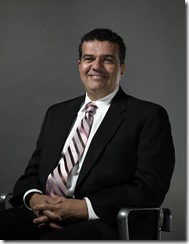The GSM Association’s primary reason for being is to lobby for the interests of mobile operators, most of them with a GSM heritage, in a rapidly evolving landscape. Ricardo Tavares, senior vice president at the GSMA believes HSPA has a particular resonance in markets in the Middle East given the pent-up demand for Internet access and the relatively high penetration of mobile handsets
The desire for mobile operators around the world to want to drive flagging voice revenues has resulted in a great deal of emphasis being placed on data services and the development of mobile applications that will not only retain subscribers, but will also motivate them to spend more than they would if these applications were not on offer. Ricardo Tavares believes that HSPA as a technology matches well with these needs, with examples such as the runaway success of mobile data applications in Saudi Arabia being a case-in-point. While market forces are clearly gravitating towards the deployment of faster data networks, Tavares warns that excessive taxation of equipment and handsets could develop to become a real inhibitor to further growth.
“Governments need to start reducing tax for mobile broadband in markets such as Saudi,” Tavares states. “Saudi alone has the potential to become the leading HSPA market in the world, and it wouldn’t be a good result if this potential were jeopardised by excessive taxation.”
Tavares believes the same key drivers for mobile broadband in the Middle East are likely to come into play in sub-Saharan Africa in the next fives years or less as the total cost of ownership of mobility continues to fall and pentup demand for access to the Internet remains high. In North Africa, for example, Algeria is the only country not to have deployed HSPA and Tavares believes the business case for the widespread adoption of the technology is being made across the continent.
“LTE is on the horizon, but there is still a long life left in HSPA. There is HSPA+, and devices are available, and while there is not going to be a network-wide deployment of HSPA+, it will make sense in densely populated urban areas,” Tavares says.
A challenge that telcos in the Middle East face to a larger degree than operators in virtually any other part of the world, is the large number of integrated players that offer mobile and fixed line services, and face increased complexity in the choice of broadband invest across different transport layers. Should more money be invested in HSPA+ and LTE than on FTTx, GPON or IPTV, for example?
“I believe that operators in the Middle East understand the approach necessary for an integrated strategy,” says Tavares. “I think there is a general understanding that without a mobile strategy a telco just won’t survive, but there also needs to be investment in the fixed line, not least for backhaul benefits,” he adds.
At the beginning of the year, world mobile penetration levels stood at approximately 53 per cent and this figure is forecast to rise to 80 per cent by 2012. Broadband penetration stood at around 5.32 per cent at the beginning of the year, highlighting the growth potential that exists for its further uptake. Also given the fact that the overwhelming majority of mobile subscribers to be added in the coming years will be found in emerging markets, it makes sense that these markets will also be the natural hotspots for mobile broadband growth.





0 comments ↓
There are no comments yet...Kick things off by filling out the form below.
Leave a Comment